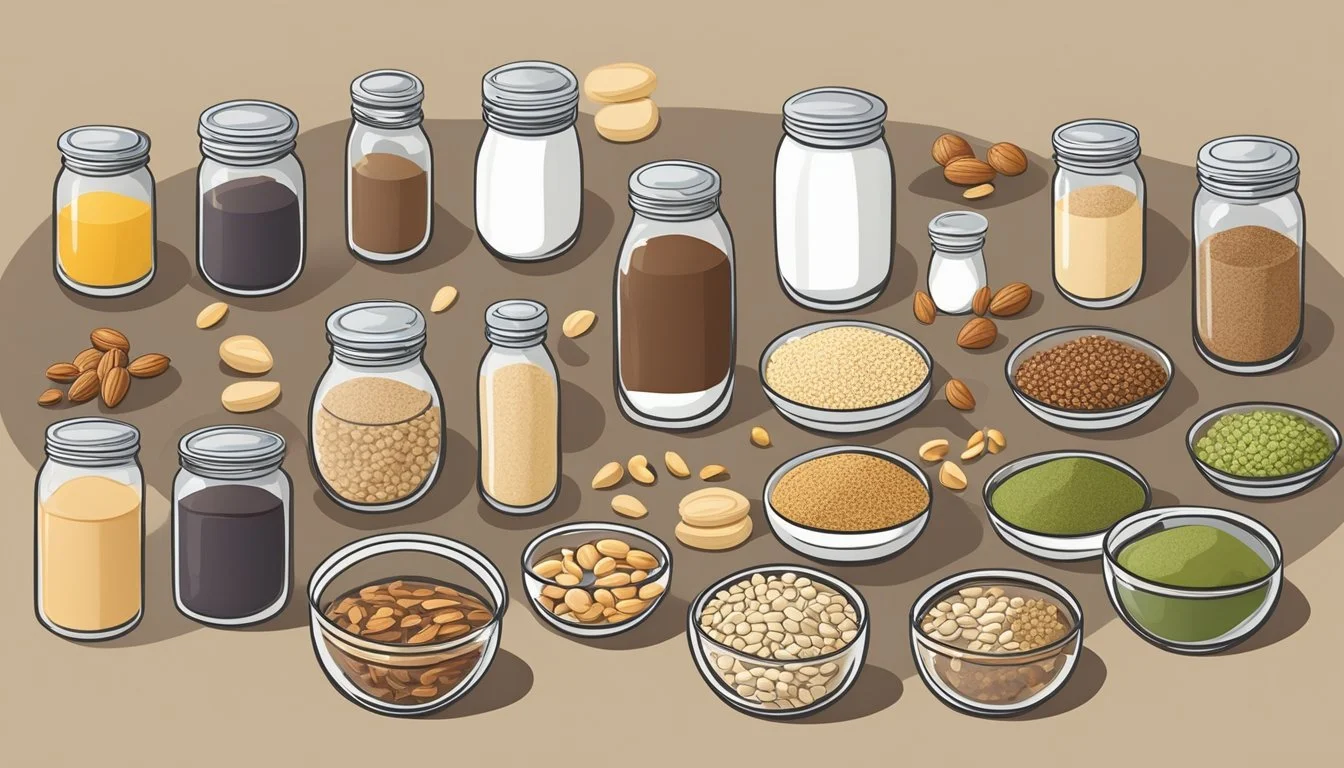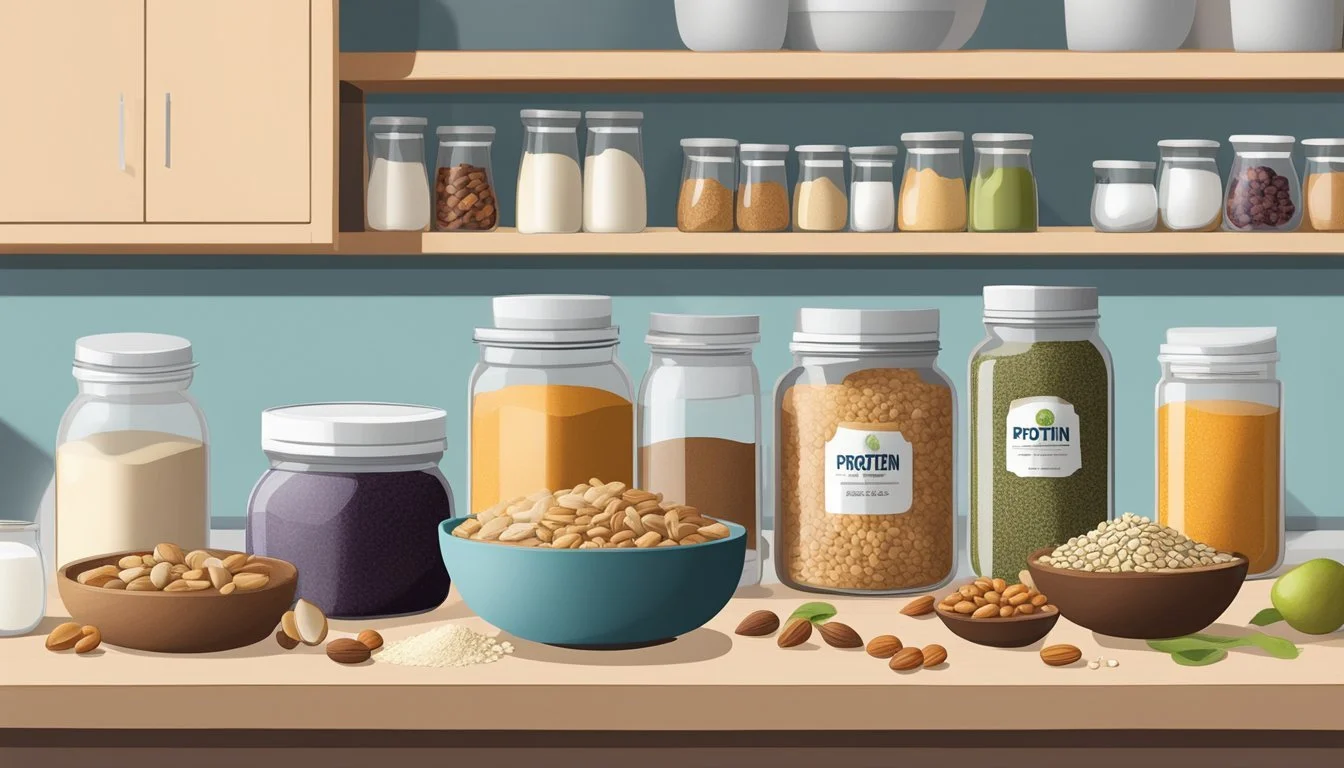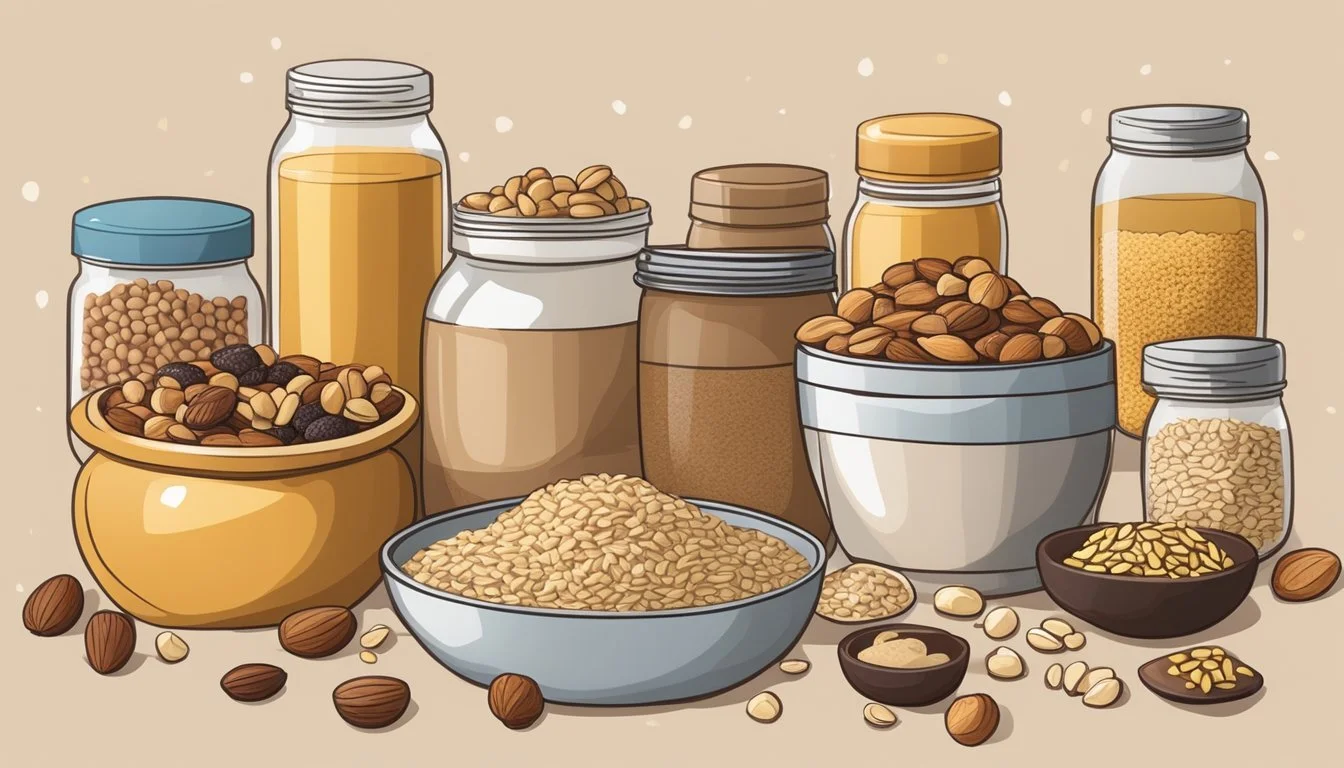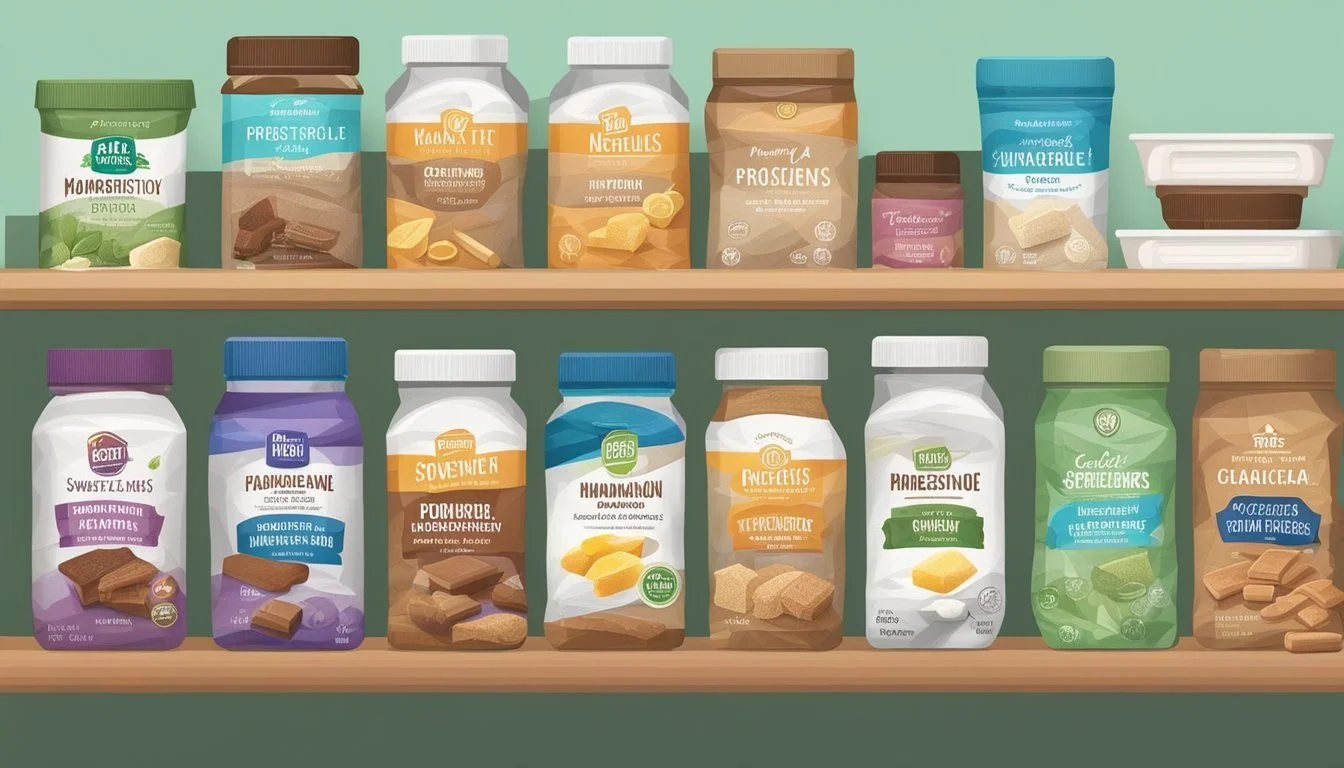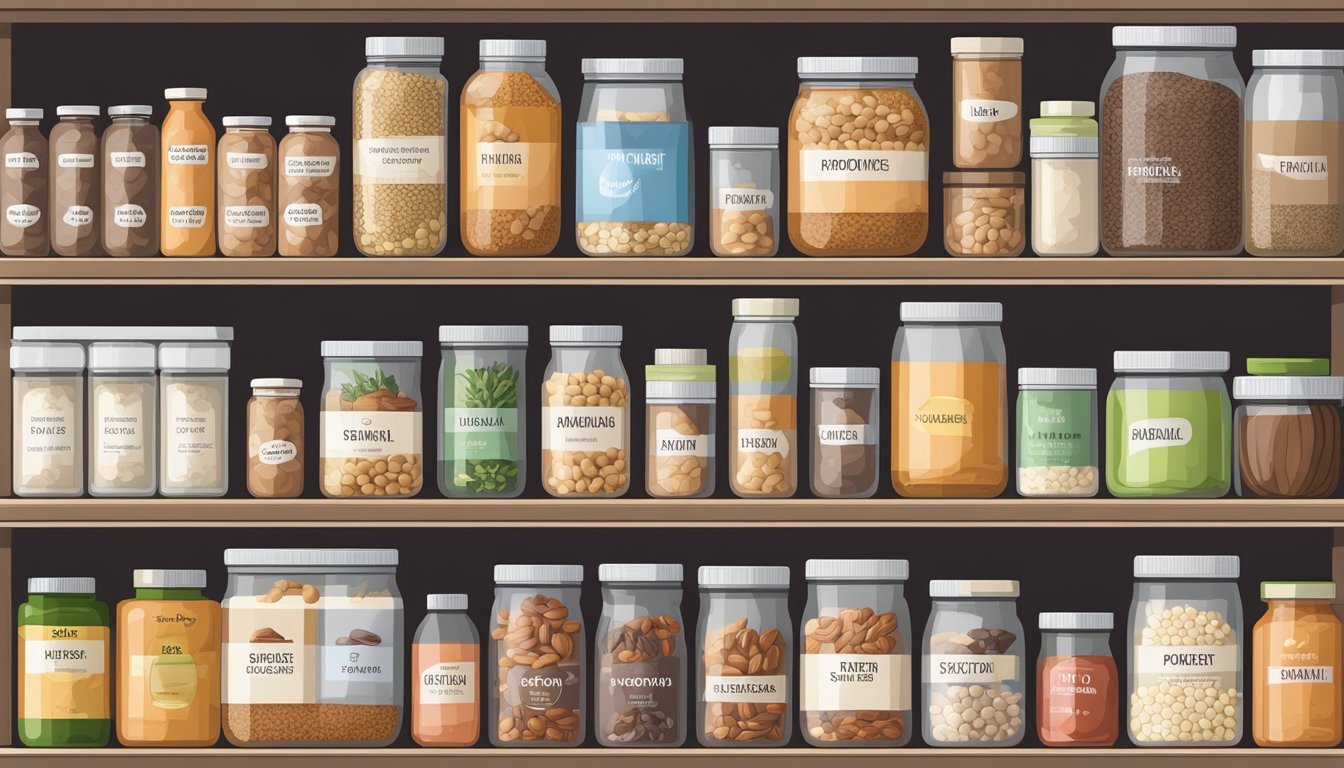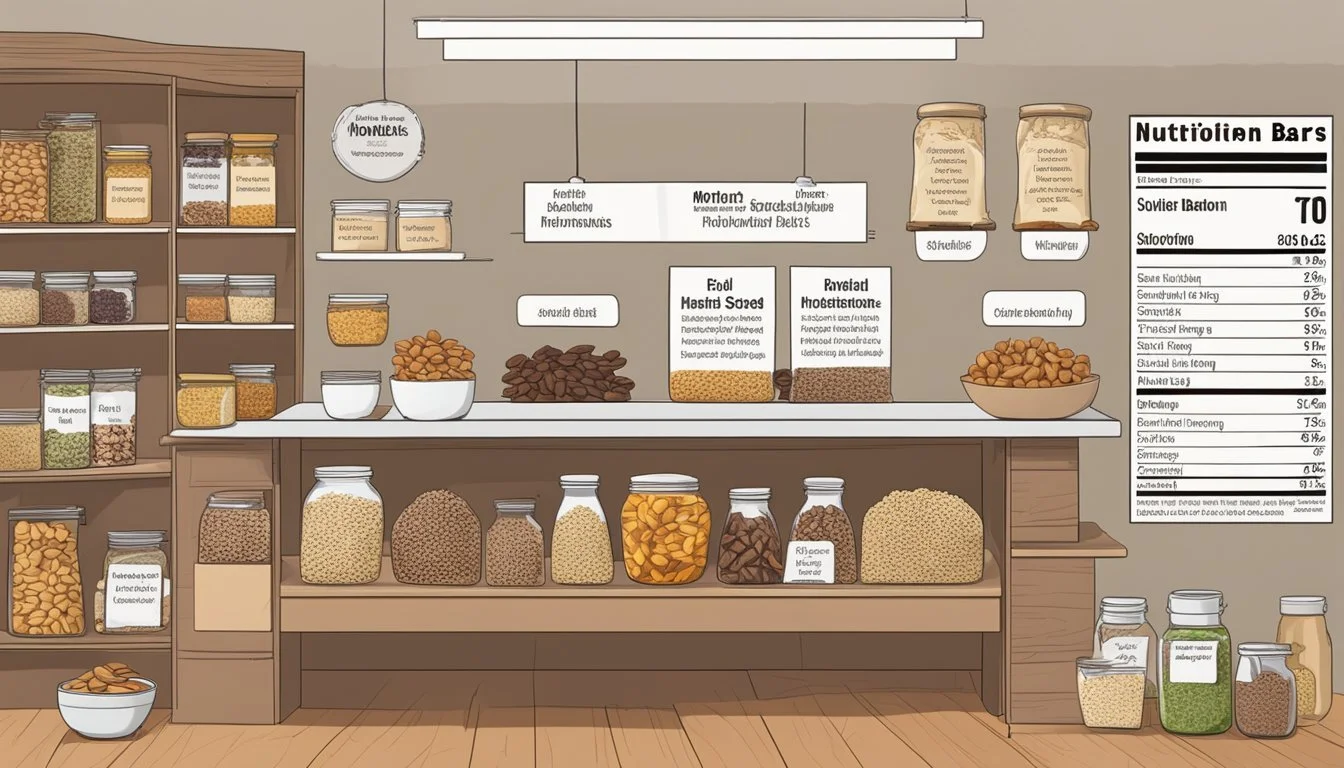Shelf-Stable Ingredients for Homemade Protein Bars
Your Essential Guide
Homemade protein bars offer a convenient and cost-effective alternative to store-bought options, allowing individuals to cater to their dietary preferences and nutritional needs with ease. They are particularly appealing to those looking for a quick source of energy or a post-workout replenishment that aligns with their fitness goals. The foundation of these bars is often a combination of shelf-stable ingredients that boast a long life without the need for refrigeration. These staples include oats, nuts, seeds, dried fruits (What wine goes well with dried fruits?), and various forms of protein powder, which can be customized to suit different tastes and textures.
The process of crafting protein bars at home begins with selecting the right recipe that balances macronutrients and caters to personal taste preferences. Key to a successful recipe are ingredients that not only provide the necessary protein content but also bind the bars together and add flavor and nutrition. Consistency is achieved through a binding agent such as honey, maple syrup, or a nut butter, which serves to hold the dry ingredients in place and also contributes to the bar's overall taste profile.
It’s essential for the homemade protein bars to strike a balance between being nutritionally dense and palatable. Shelf-stable ingredients make this possible, ensuring that each bar is packed with energy yet capable of withstanding storage at room temperature. This allows for bulk preparation and the convenience of having a nutritious snack readily available, whether one is at home, at the office, or on-the-go.
Understanding Protein and Its Importance
Protein plays a pivotal role in nutrition and is essential for building and repairing tissues, making hormones and enzymes, and supporting immune function.
The Role of Protein in Nutrition
Protein is one of the three macronutrients and provides approximately 4 calories per gram. It is essential for the growth and repair of tissues, and it aids in the preservation and building of lean muscle mass. Dietary protein also contributes to satiety, which can help regulate body weight by keeping one fuller for longer periods.
Selecting the Right Protein Sources
Choosing the right source of protein for homemade protein bars is crucial to achieving the desired nutritional value. Whey protein is a complete protein and contains all nine essential amino acids, but it's derived from milk, making it unsuitable for vegans. On the other hand, plant-based proteins such as pea, soy, or rice protein powders can be combined to ensure a full amino acid profile. Whole food sources like eggs, which are also rich in vitamins and minerals like vitamin D, B12, selenium, and omega-3 fatty acids, can be considered for those not using protein powders.
Calculating Protein Content
The protein content in homemade protein bars can be calculated by adding the grams of protein from every ingredient used. Each ingredient will have its nutritional profile, which typically includes not just protein but also calories, sodium, potassium, calcium, and iron levels. For instance:
1 scoop of whey protein powder: approximately 20-25 grams of protein
1/4 cup of almonds: around 7 grams of protein
A bar's total protein content is the sum of the protein from all its ingredients.
Protein's Impact on Texture and Consistency
Protein type and quantity significantly influence a bar's texture and consistency. Whey protein tends to create a softer, chewy texture, while plant-based proteins might result in a thicker, more substantial bar. To ensure palatability, balancing protein with binders such as nut butters or oats is necessary to achieve the desired consistency without making the bars too hard or crumbly.
Choosing Base Ingredients for Texture and Nutrition
When constructing homemade protein bars, selecting base ingredients that offer a balance of texture and nutritional benefits is crucial. Integrating whole grains and various nuts and seeds contributes significantly to both the taste and health profile of protein bars.
Types of Oats as a Foundation
Oats are often the cornerstone of protein bars due to their versatility and nutritional value. Rolled oats are predominantly used for their chewy texture and high fiber content. Oatmeal, which constitutes ground oats, can serve as a binding agent and offers a smoother texture to the bars.
Nutrition: High in fiber, protein, and minerals.
Texture: Rolled oats provide chewiness, while oatmeal contributes to a more compact bar.
Utilizing Nuts and Seeds
Nuts and seeds, such as almonds, cashews, pumpkin seeds, and sunflower seeds, are integral for adding crunch and boosting the protein content. Chopped nuts can be sprinkled throughout the bars for a varied texture.
Types:
Almonds: Rich in vitamin E and magnesium.
Cashews: A good source of iron and zinc.
Pumpkin Seeds: High in antioxidants and fatty acids.
Sunflower Seeds: Contain vitamin B and selenium.
Incorporating Nut and Seed Butters
Nut butter such as peanut butter or almond butter, and seed butter are used to bind ingredients and enrich the flavor. They also contribute healthy fats and make the texture of the protein bars softer and more palatable.
Nutrition: Provides healthy fats, vitamins, and proteins.
Example: Peanut butter is high in potassium and almond butter offers additional calcium.
Understanding Whole Grains and Fiber
Whole grains are a fundamental part of protein bars providing essential fiber. Beyond oats, other grains such as quinoa or amaranth can be used. Fiber is key for digestive health and can help to promote satiety, making the protein bar a fulfilling snack.
Grains: Quinoa is a complete protein, while amaranth contributes iron and magnesium.
Fiber: Aids in digestion and prolongs feelings of fullness.
Sweeteners and Flavor Enhancers
When creating shelf-stable homemade protein bars, the choice of sweeteners and flavor enhancers is crucial not only for taste but also for maintaining the product's longevity. The selection ranges from natural options like honey and dates to alternatives like erythritol.
Choosing Healthy Sweeteners
Natural sweeteners like honey, maple syrup, and dates are preferred by health-conscious individuals due to their nutrients and lower processing compared to refined sugar. They offer distinct flavors and a variety of sweetness levels. Honey and maple syrup also bring a liquid consistency that can help in binding the ingredients of protein bars together.
Role of Natural Sweeteners
Natural sweeteners perform dual roles: they sweeten and add moisture, which are essential for the texture of homemade protein bars. Ingredients like dates and raisins also contribute fiber and act as natural preservatives due to their low water activity, which helps in extending shelf life.
Artificial versus Natural Sweeteners
While artificial sweeteners such as sorbitol, xylitol, and erythritol may provide a low-calorie alternative to sugar, many consumers prefer natural sweeteners. However, for those monitoring their sugar intake, these sugar alcohols can be a beneficial alternative, albeit with a different sweetness profile and potential digestive considerations.
Flavor Diversity with Vanilla and Spices
Vanilla extract and spices such as cinnamon can dramatically enhance the flavor profile of protein bars without significantly increasing their sugar content. Vanilla offers a warm, complex flavor, while cinnamon brings its own sweet-spiciness, both of which can help mask the taste of less palatable protein powders.
Creating Custom Protein Bar Varieties
Creating homemade protein bars allows for a nutritious snack that can be tailored to individual tastes and dietary needs. The versatility in ingredients offers endless combinations to keep snack time interesting and healthy.
Mixing in Chocolate and Cocoa Variants
For those with a sweet tooth, chocolate can create delicious and indulgent protein bars. Using cocoa powder provides a rich flavor without excessive added sugars, while chocolate protein powder can enhance the protein content with a chocolaty taste. Adding mini chocolate chips gives a desirable texture and pockets of chocolatey goodness within the bars.
Cocoa Variants:
Cocoa powder (unsweetened)
Chocolate protein powder
Mini chocolate chips
Incorporating Fruits for Natural Sugars
Using dried fruits such as dates, blueberries, or cherries can add natural sweetness and chewiness to protein bars. Dates also act as a binder, holding the bars together, while blueberries and cherries offer antioxidants and a burst of flavor. For a tropical twist, banana can be included to enhance the fruitiness and moisture of the bars.
Fruits for Sweetness:
Dates (pitted and chopped)
Dried blueberries
Dried cherries
Banana (mashed)
Adding Texture with Coconut and Other Add-Ins
Shredded coconut not only contributes a unique flavor but also adds a desirable texture to protein bars. It can be toasted for a nuttier taste or used raw for a more subtle presence. Incorporating various nuts and seeds, chopped for consistency, brings additional texture and health benefits including fiber and healthy fats.
Texture Add-Ins:
Shredded coconut (toasted or raw)
Nuts (almonds, cashews)
Seeds (chia, flaxseeds, hemp seeds)
Non-Dairy and Gluten-Free Options
For those with dietary restrictions, protein bars can easily be made gluten-free or dairy-free. Gluten-free oats or other gluten-free flours can be utilized in place of regular oats, and dairy-free chocolate can replace traditional chocolate products. Using rice protein or pea protein powders ensures that the bars cater to non-dairy diets without compromising on the protein content.
Gluten-Free and Dairy-Free Ingredients:
Gluten-free oats
Dairy-free chocolate chips
Non-dairy protein powders (rice, pea)
Essential Techniques for Homemade Protein Bars
Crafting homemade protein bars involves key steps to ensure the proper texture and consistency. Each technique plays a crucial role in transforming simple, shelf-stable ingredients into delicious and nutritious snacks.
Mixing Ingredients Thoroughly
To create a consistent texture throughout the protein bar, a food processor can be a valuable tool. Start by using the pulse function to grind dry ingredients like oats or nuts to a fine consistency. Then, combine them with wet ingredients such as honey or nut butter. It’s important to mix the ingredients until they are evenly distributed, preventing any dry spots or overly sticky areas in the final product. A thorough blend establishes the base for a protein bar that holds together well.
Baking or No-Bake Options
Protein bar recipes can be divided into two main methods: baking and no-bake. The decision to bake or not will affect the texture and preparation process:
Baking: Preheat the oven typically between 325°F (163°C) and 350°F (177°C). Spread the mixture onto a pan lined with parchment paper to avoid sticking. The baking process helps create a firmer texture reminiscent of store-bought options.
No-Bake: Combine ingredients until they achieve a moldable consistency. Press the mixture firmly into a pan, and then refrigerate or freeze to set. No-bake bars tend to have a chewier texture and often require less preparation time.
Proper Storage for Longevity
The way protein bars are stored can greatly impact their shelf life and freshness. Here are the optimal storage techniques:
Refrigerator: Ideal for extending freshness, especially for no-bake bars. Seal bars in an airtight container to prevent exposure to air and moisture.
Freezer: For long-term storage, wrapping individual bars and freezing them keeps them fresh for months. Thaw at room temperature before consuming.
Room Temperature: Some baked bars can be stored at room temperature in a sealed container, away from direct sunlight and heat sources. They should be consumed within a week to maintain optimal texture and flavor.
By refrigerating or freezing homemade protein bars, one can avoid the preservatives found in store-bought varieties while enjoying a homemade snack that is ready to eat at their convenience.
Nutritional Information and Health Considerations
In crafting shelf-stable homemade protein bars, one must consider the nutritional balance of macronutrients, the role of added sugars, and potential allergens to cater to different dietary needs.
Balancing Macronutrients for Energy and Health
Macronutrients—proteins, carbohydrates, and fats—are the building blocks of a nutritious protein bar. Proteins are essential for muscle repair and growth, and they should come from high-quality sources like whey, pea protein, or rice protein. Carbohydrates provide the body with energy and should be sourced from whole grains for added fiber, which aids in digestion and sustained energy release. It's important to include a moderate amount of fats, especially unsaturated fats, which can come from nuts or seeds. However, one should be mindful of the portion of saturated fat to maintain heart health.
Understanding the Impact of Added Sugars
Added sugars can greatly affect the calorie content and health profile of protein bars. Natural sweeteners such as honey or maple syrup are often used, but they should be used sparingly to keep sugar content in check. It's important to note that while they are better than refined sugars, they still contribute to overall sugar intake. One must also consider the impact on blood sugar levels and the potential for energy spikes and crashes.
Allergies and Dietary Restrictions
Protein bars must be carefully formulated to be inclusive of individuals with allergies or dietary restrictions. For those avoiding dairy, plant-based proteins such as soy or pea protein are alternatives. Options like almond butter or cashew butter can be used, but for a nut-free protein bar, seeds like sunflower or pumpkin seeds can be incorporated. For soy-free protein bars, avoid soy protein and lecithin. Whole grains offer a good base for the bars, but for gluten-free options, one must ensure that oats or any other grains used are certified gluten-free. Lastly, for dairy-free bars, avoid milk-based proteins and use alternatives such as coconut oil instead of butter.
Comparing Homemade versus Store-Bought Bars
When evaluating protein bars, it's essential to consider factors such as cost, nutrition, ingredient quality, and suitability for special diets. Homemade bars offer increased control over these aspects, while store-bought alternatives provide convenience.
Cost-Efficiency and Customizability
Homemade protein bars can be more cost-effective as they allow for bulk purchasing of ingredients, which often results in lower expenses per bar. Customizability is another benefit, as individuals can tailor recipes to their taste preferences and nutritional needs, including protein levels and calorie count. In contrast, store-bought bars usually come at a premium price due to packaging and branding.
Assessing the Nutritional Differences
Nutritional content can vary significantly between homemade and store-bought protein bars. Homemade versions often boast simpler ingredients with no added preservatives, which can lead to a healthier product. For instance, when using natural ingredients like oats, nuts, and honey, as suggested in the search results, one avoids the excess saturated fat, cholesterol, and calories commonly found in processed bars.
Understanding Ingredient Quality and Freshness
The quality of ingredients and their freshness contribute greatly to the nutritional value of protein bars. Homemade bars have the advantage of using freshly sourced components without the need for shelf-stable treatments, which can diminish nutrient levels. This means that homemade bars can often provide more of the original vitamins, minerals, and enzymes present in the raw ingredients used.
Advantages of Homemade for Special Diets
For individuals with special dietary requirements, such as dairy-free, gluten-free, or a low-carb diet, homemade protein bars are particularly advantageous. They can select appropriate ingredient substitutes, ensuring the bars fit their nutritional strategy and avoid potential allergens. In contrast, finding store-bought options that cater to these needs can be challenging and often more expensive.
By focusing on these areas, consumers can make an informed decision regarding whether homemade or store-bought protein bars better suit their lifestyle and health goals.

